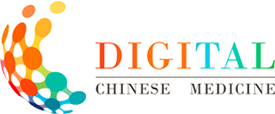Abstract:
Objective To investigate the facial spectrum and color characteristics of patients with essential hypertension post administering antihypertensive drugs, establish a classification and evaluation model based on the facial colors of the enrolled patients, and perform in-depth analysis on the important characteristics of their facial spectrum.
Methods From September 3, 2018, to March 23, 2024, participants with essential hypertension (receiving antihypertensive medication treatment, hypertension group) and normal blood pressure (control group) were recruited from the Cardiology Department of Shanghai Hospital of Traditional Chinese Medicine, the Coronary Care Unit of Shanghai Tenth People's Hospital, the Physical Examination Center of Shuguang Hospital Affiliated to Shanghai University of Traditional Chinese Medicine, and the Gaohang Community Health Service Center. This study employed the propensity score matching (PSM) method to reduce study participants selection bias. Spectral information in the facial visible light spectrum of the subjects was collected using a flame spectrometer, and the spectral chromaticity values were calculated using the equal-interval wavelength method. The study analyzed the differences in spectral reflectance across various facial regions, including the entire face, forehead, glabella, nose, jaw, left and right zygomatic regions, left and right cheek regions as well as differences in parameters within the Lab color space between the two subject groups. Feature selection was conducted using least absolute shrinkage and selection operator (LASSO) regression, followed by the application of various machine learning algorithms, including logistic regression (LR), support vector machine (SVM), random forest (RF), Naïve Bayes (NB), and eXtreme Gradient Boosting (XGB). The reduced-dimensional dataset was split in a 7 : 3 ratio to establish a classification and assessment model for facial coloration related to primary hypertension. Additionally, model fusion techniques were applied to enhance the predictive power. The performance of the models was evaluated using metrics including the area under the curve (AUC) and accuracy. Shapley Additive exPlanations (SHAP) was used to interpret the outcomes of the models.
Results A total of 114 participants were included in both hypertension and control groups. Reflectance analysis across the entire face and eight predefined areas revealed that the hypertensive group exhibited significantly higher reflectance of corresponding color light in the blue-violet region (P < 0.05) and a lower reflectance in the red region (P < 0.05) compared with control group. Analysis of Lab color space parameters across the entire face and eight predefined areas showed that hypertensive group had significantly lower a and b values than control group (P < 0.05). LASSO regression analysis identified a total of 18 facial color features that were highly correlated with hypertension, including the a values of the chin and the right cheek, the reflectance at 380 nm and at 780 nm of the forehead. The results of the multi-model classification showed that the RF classification model was the most effective, with an AUC of 0.74 and an accuracy of 0.77. The combined model of RF + LR + SVM outperformed a single model in their classification performance, achieving an AUC of 0.80 and an accuracy of 0.76. SHAP model visualization results indicated that the top three contributors to ideal prediction results based on the characteristics from the facial spectrum were the reflectance at 380 nm across the entire face and of the nose as well as the a value of the chin.
Conclusion Within the same age group, patients with essential hypertension exhibited significant and regular changes in facial color and facial spectral reflectance parameters after the administration of antihypertensive drugs. Furthermore, facial reflectance indicators, such as the overall reflectance at 380 nm and the a value of the chin, could offer valuable references for clinically assessing the drug efficacy and health status of patients with essential hypertension.









 下载:
下载: